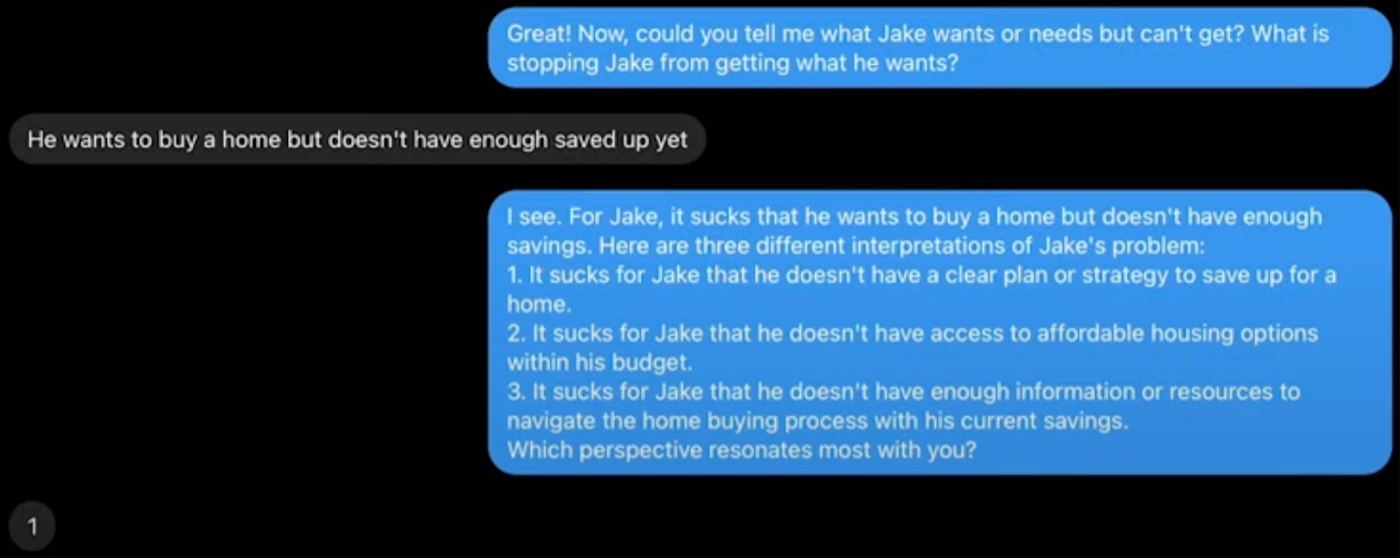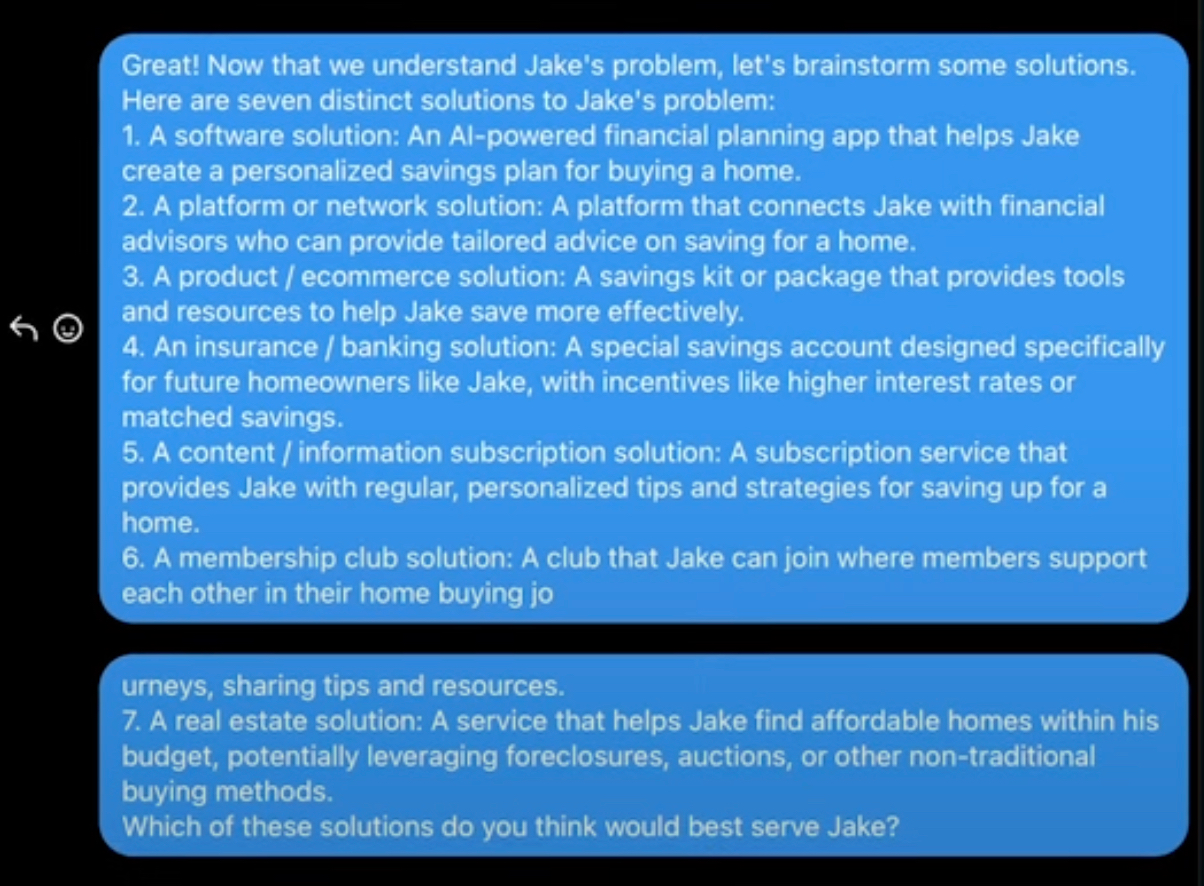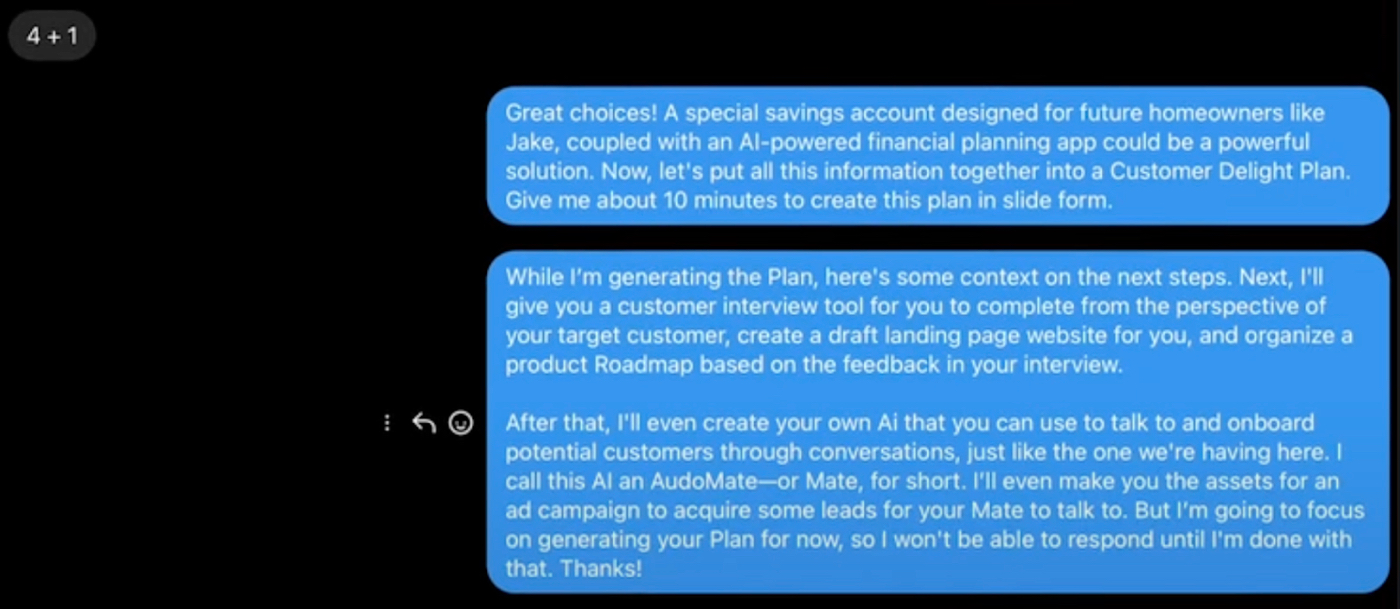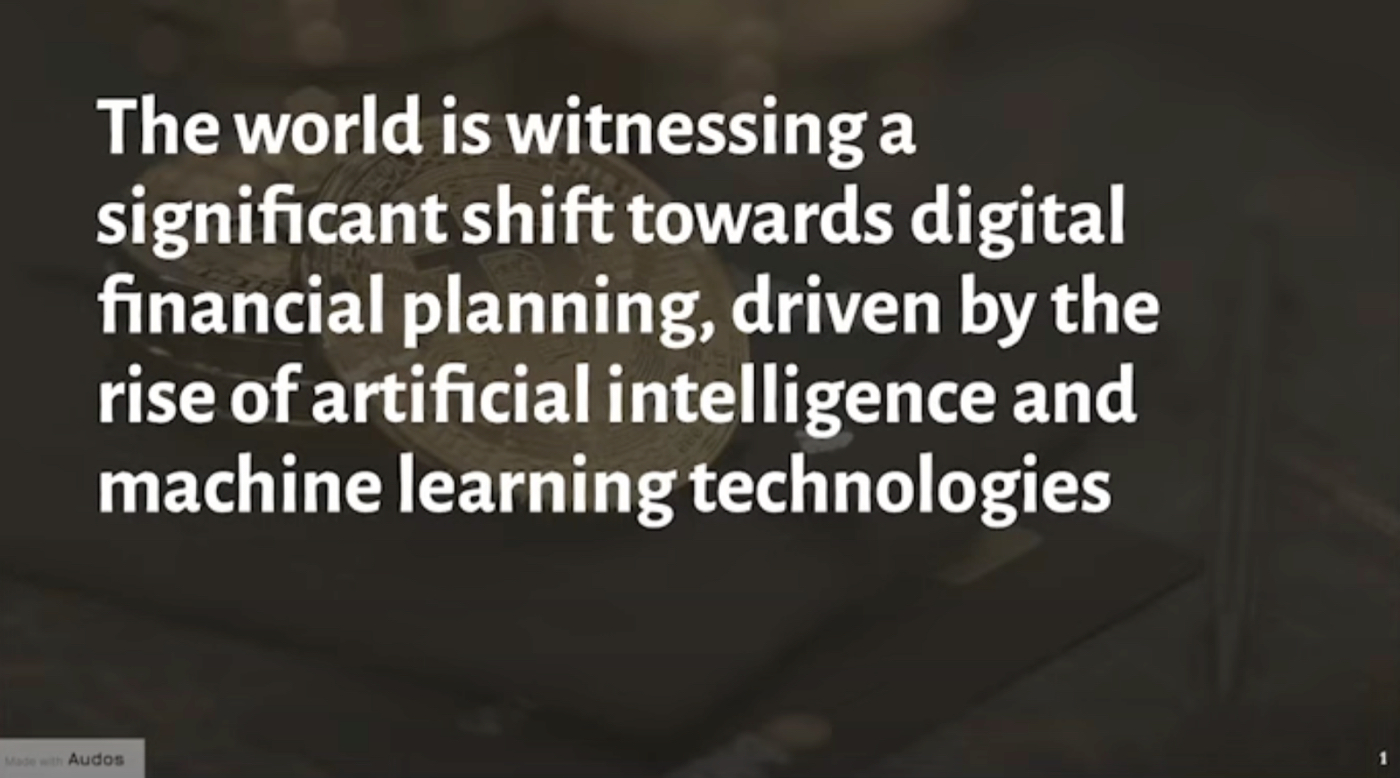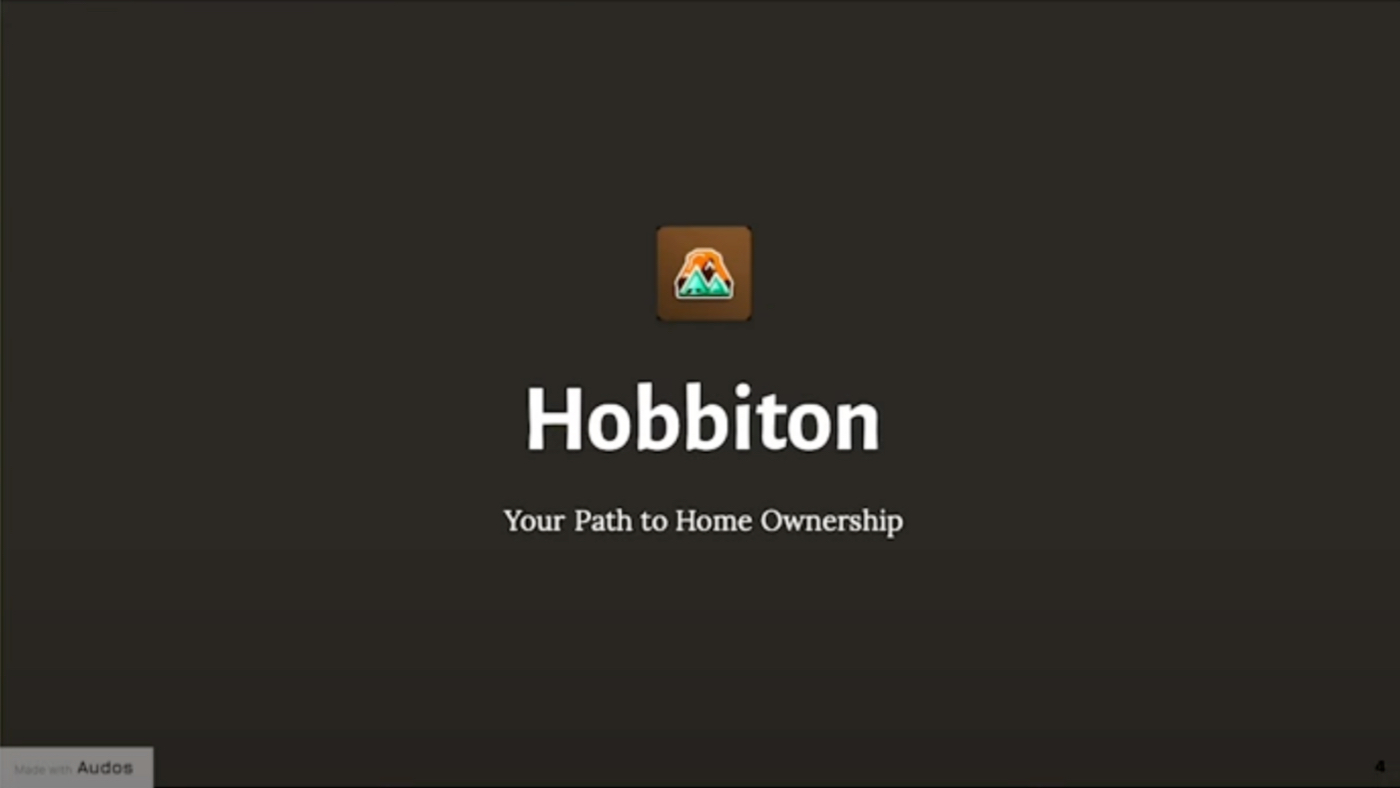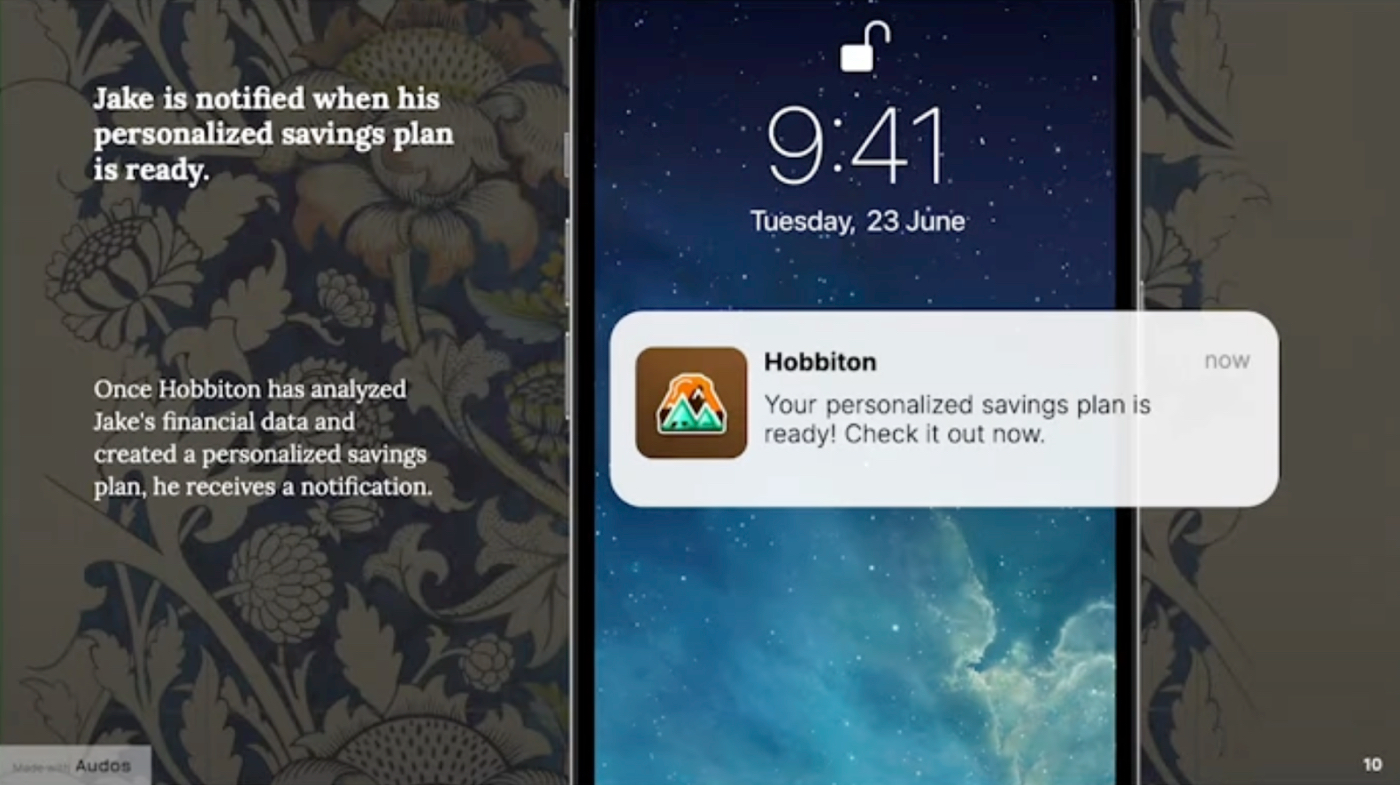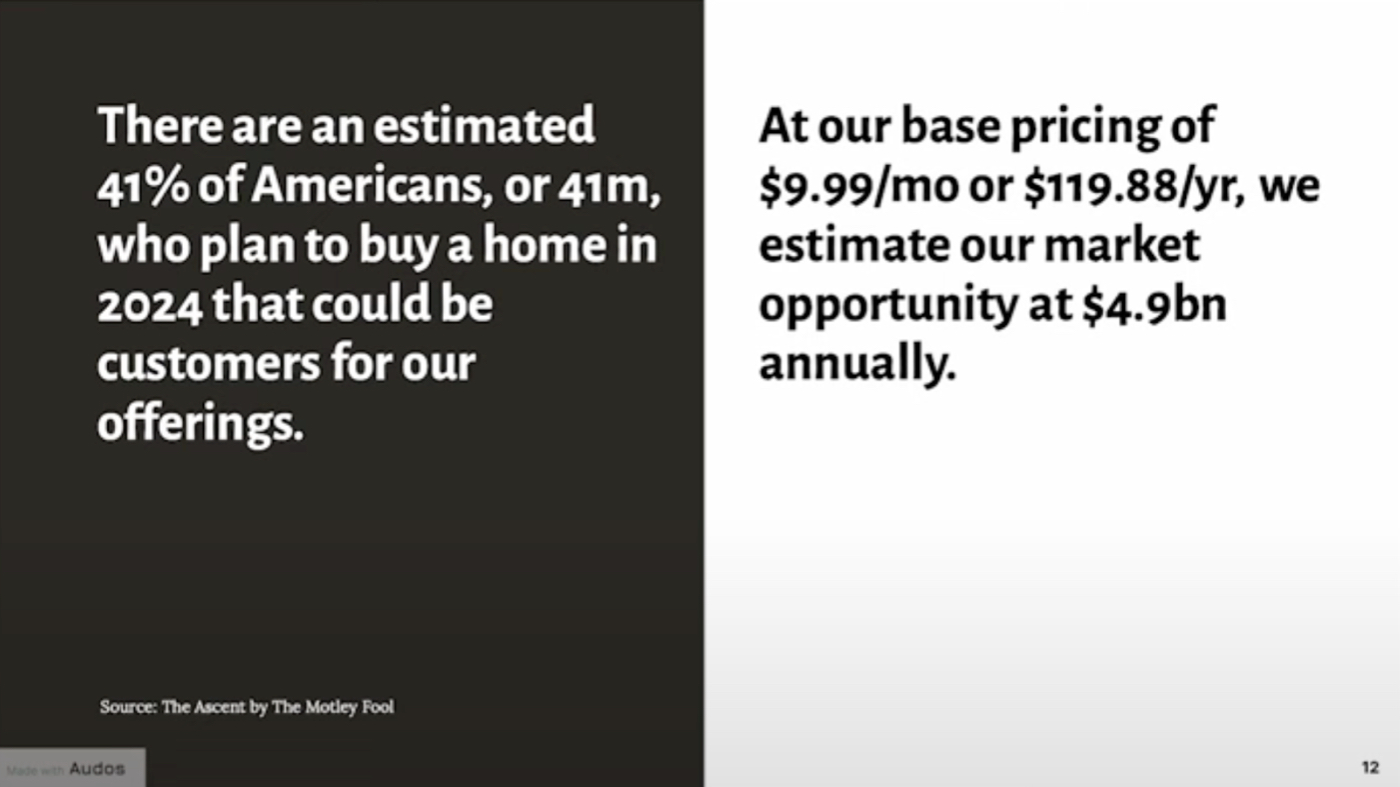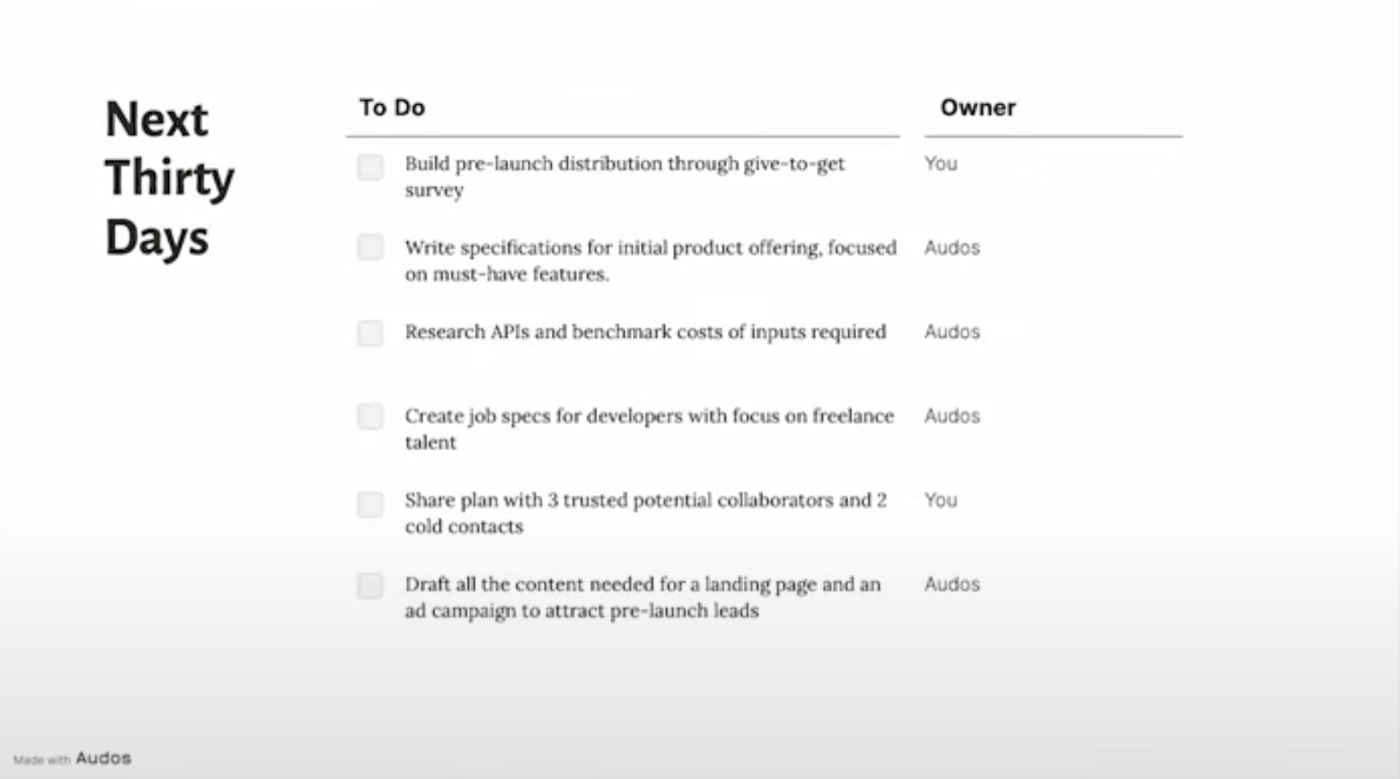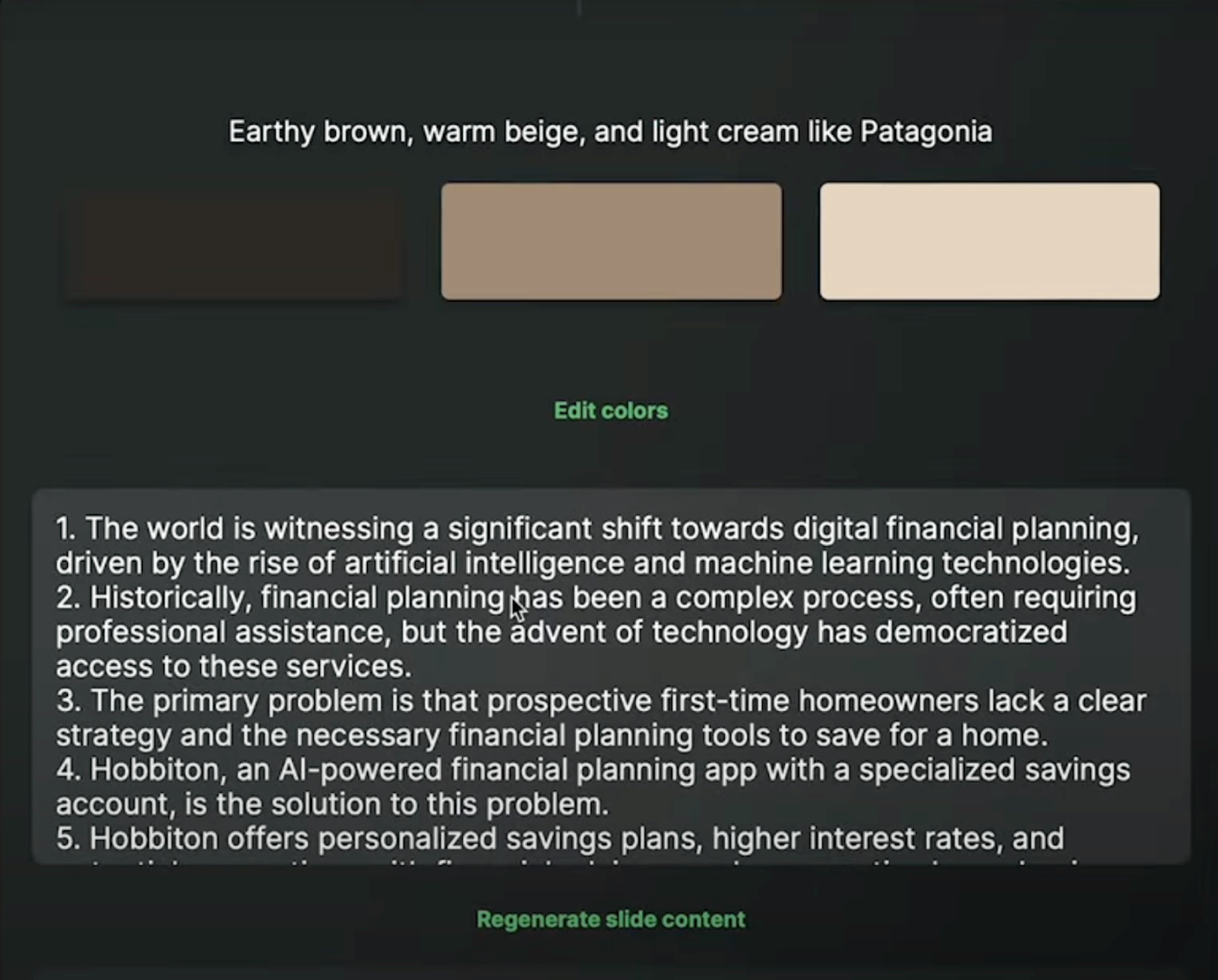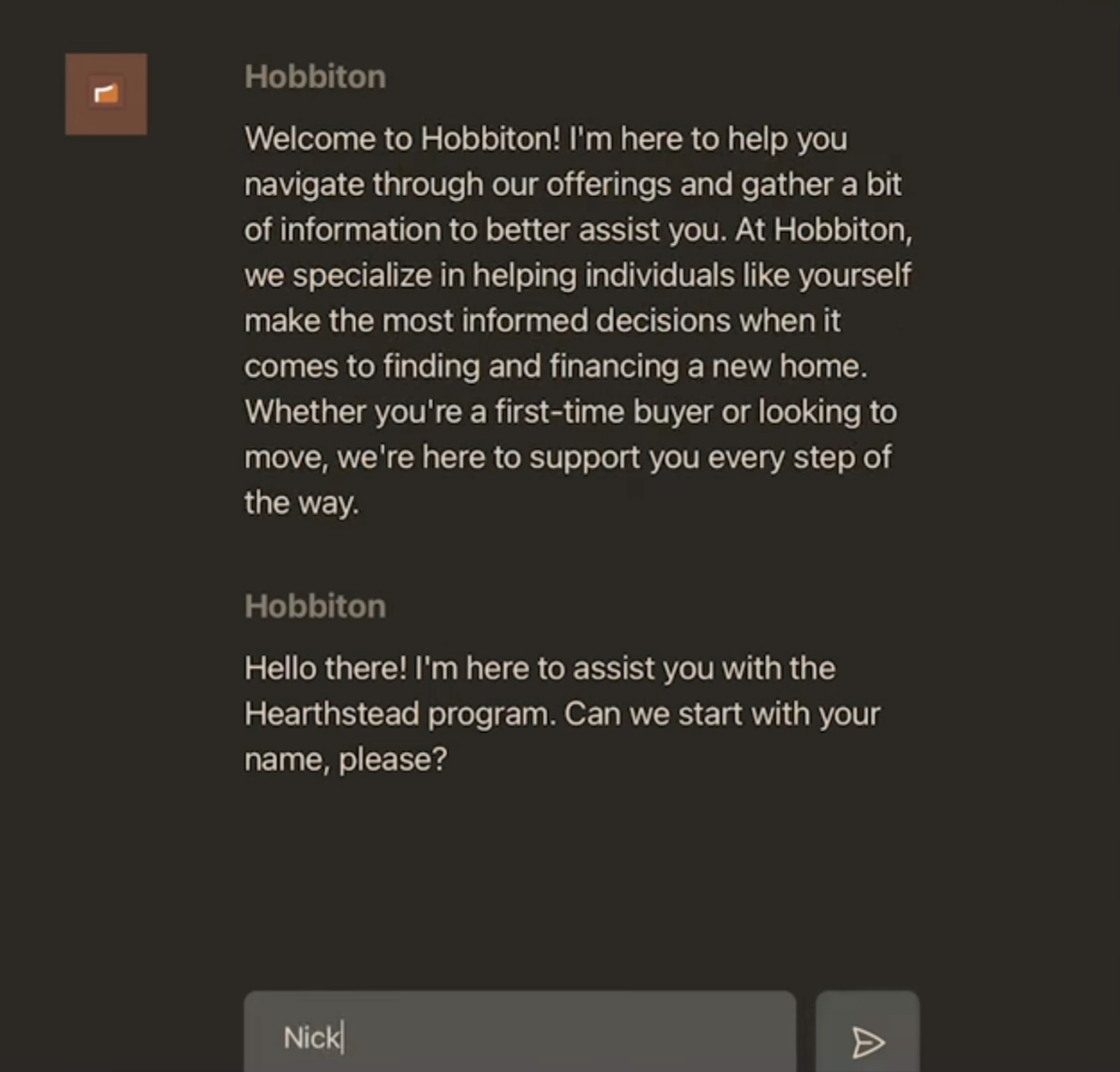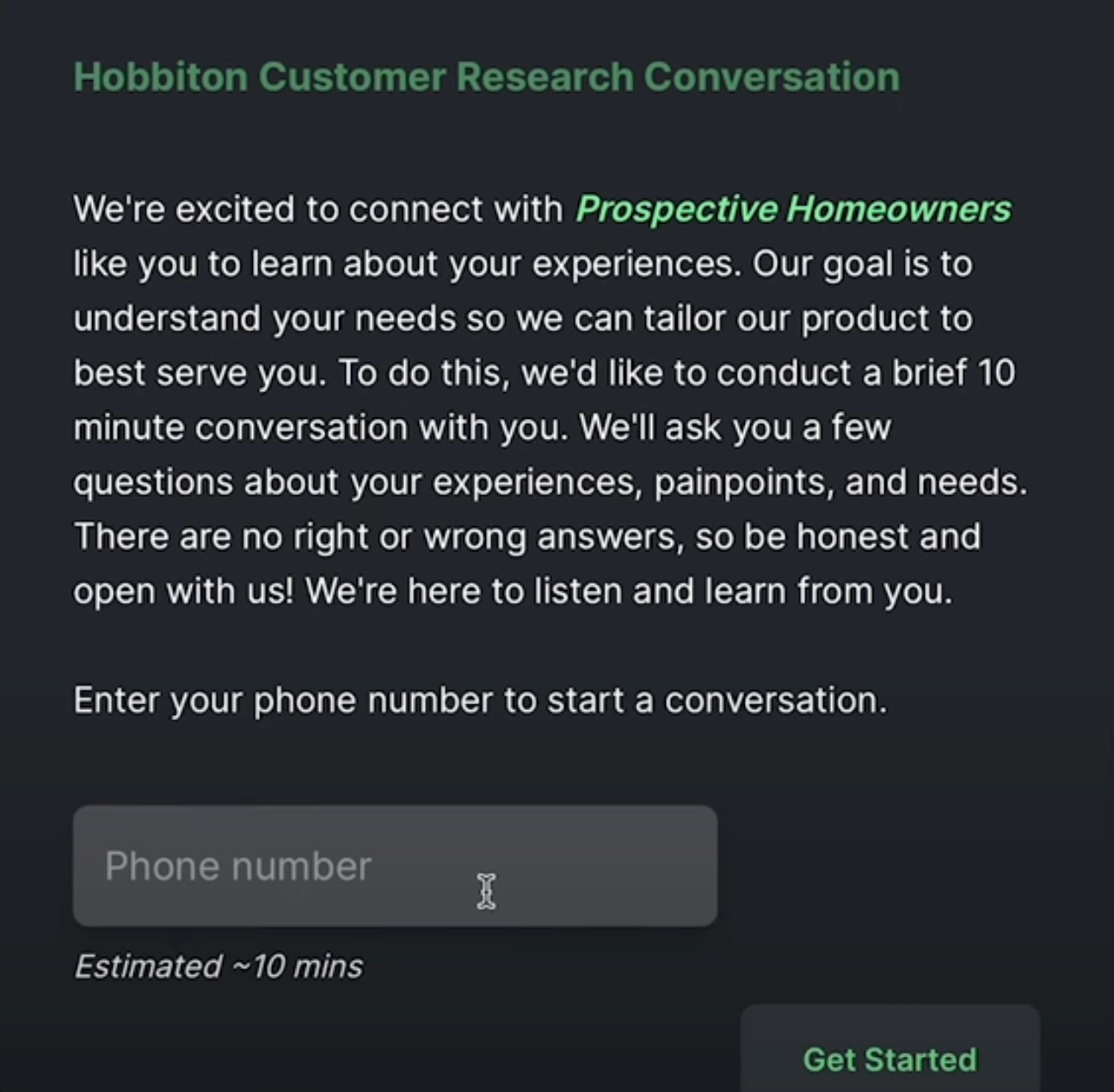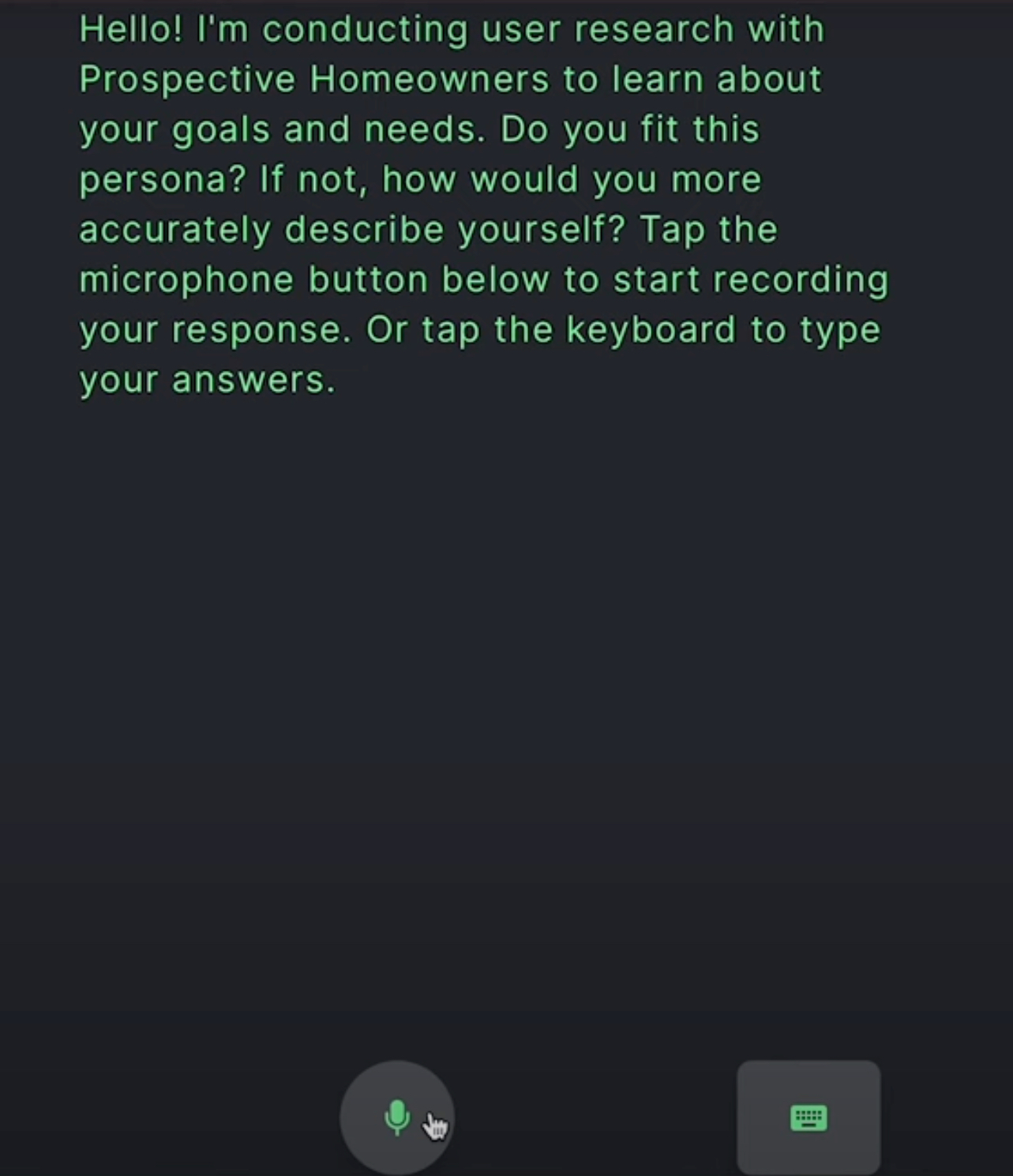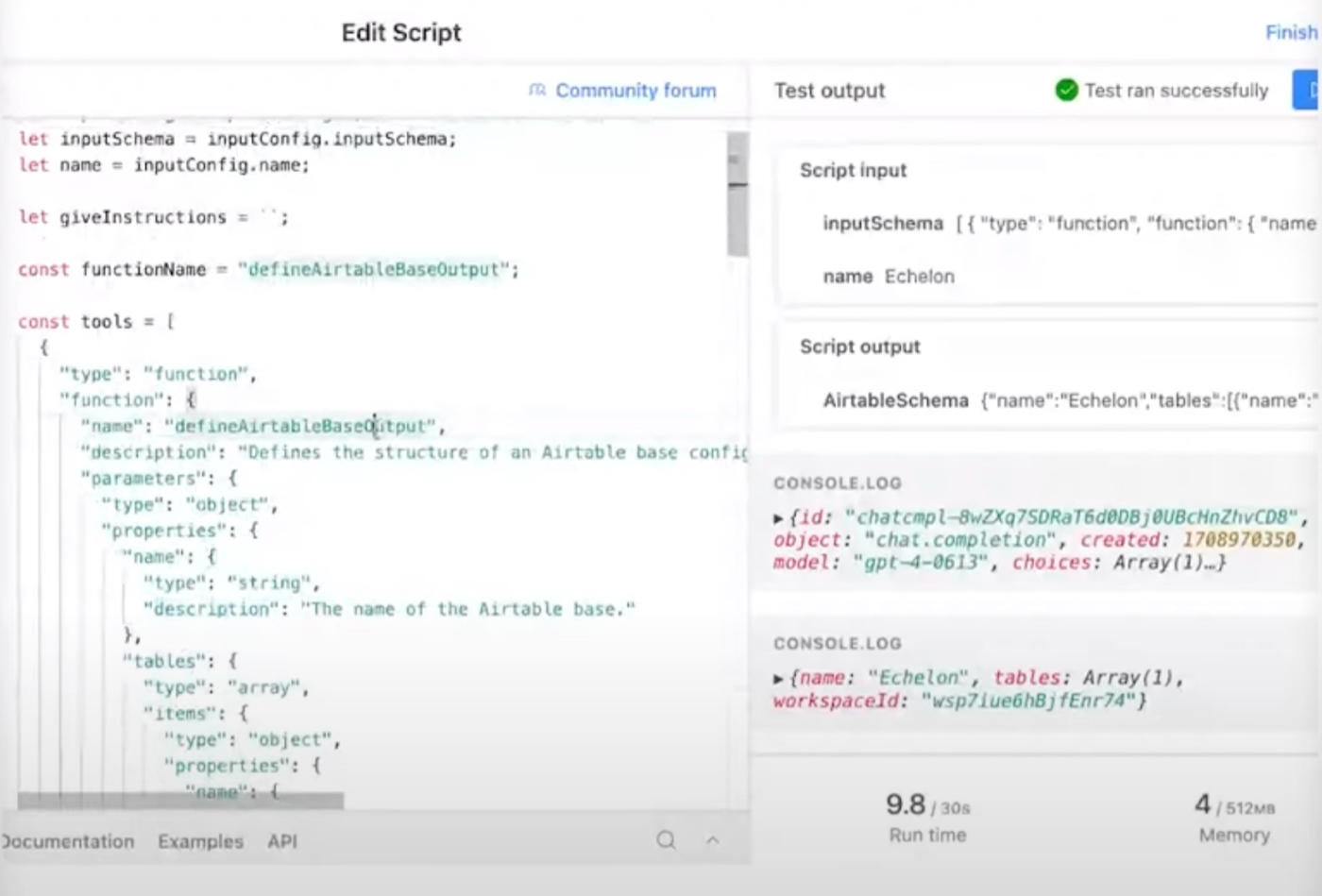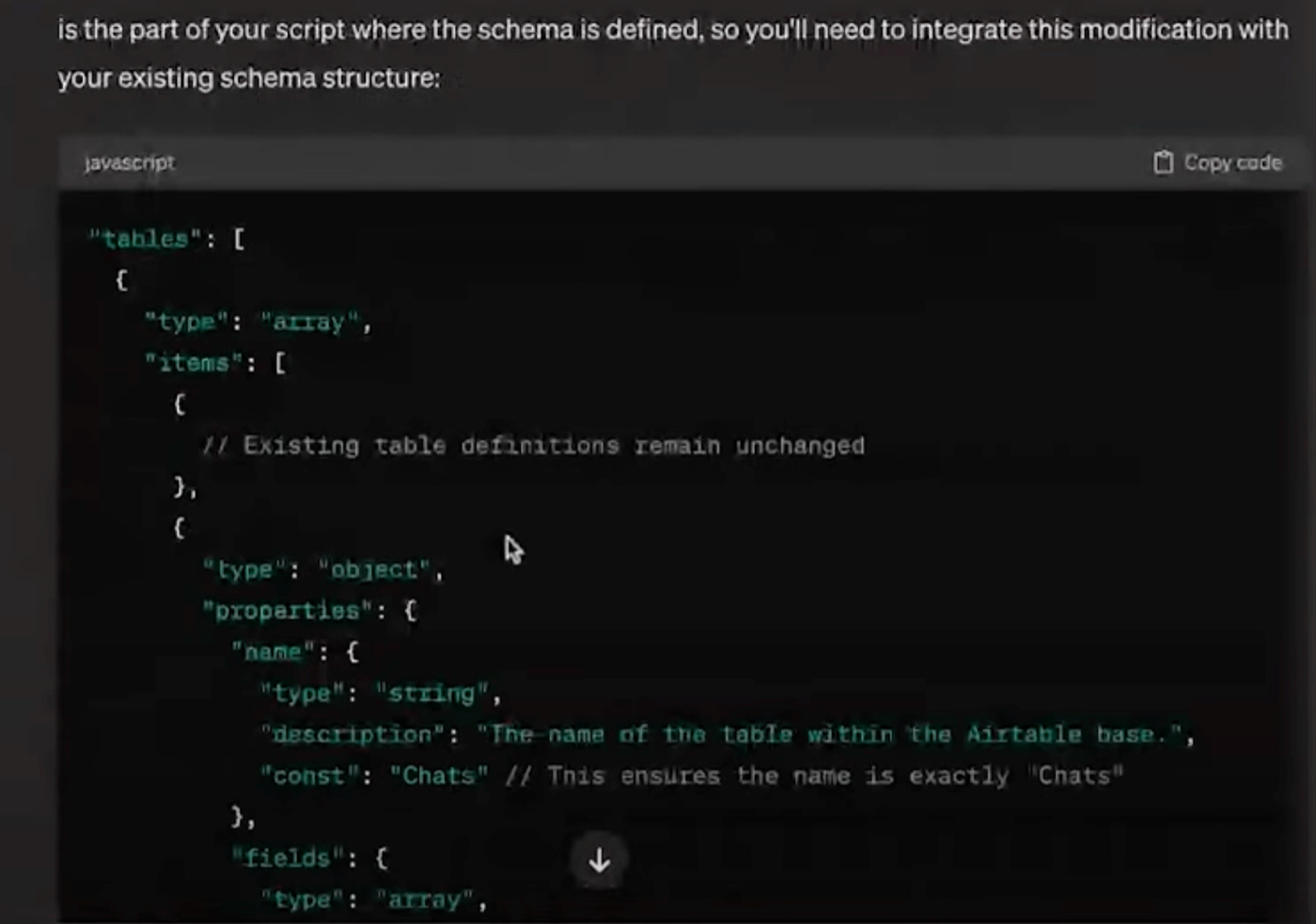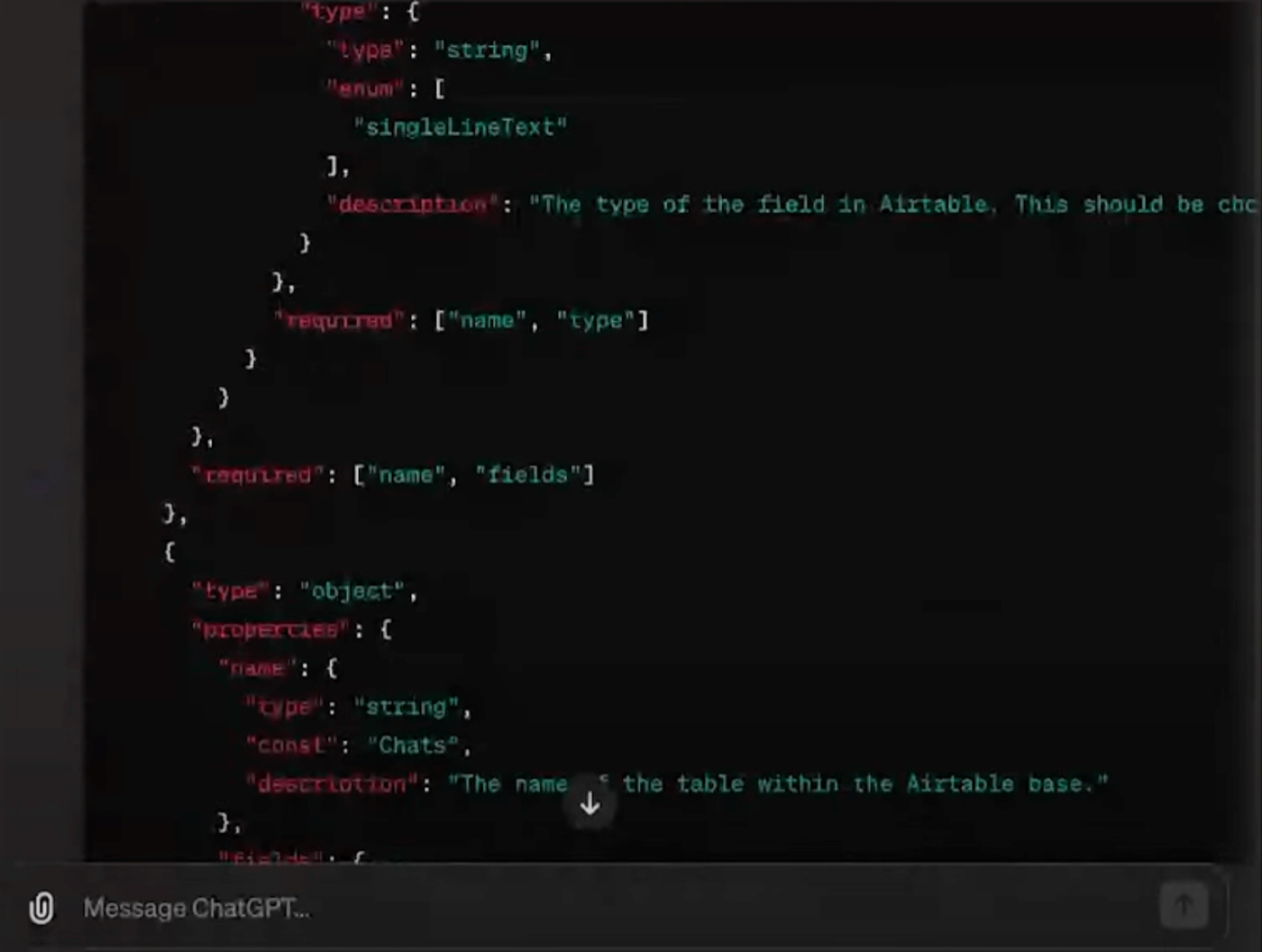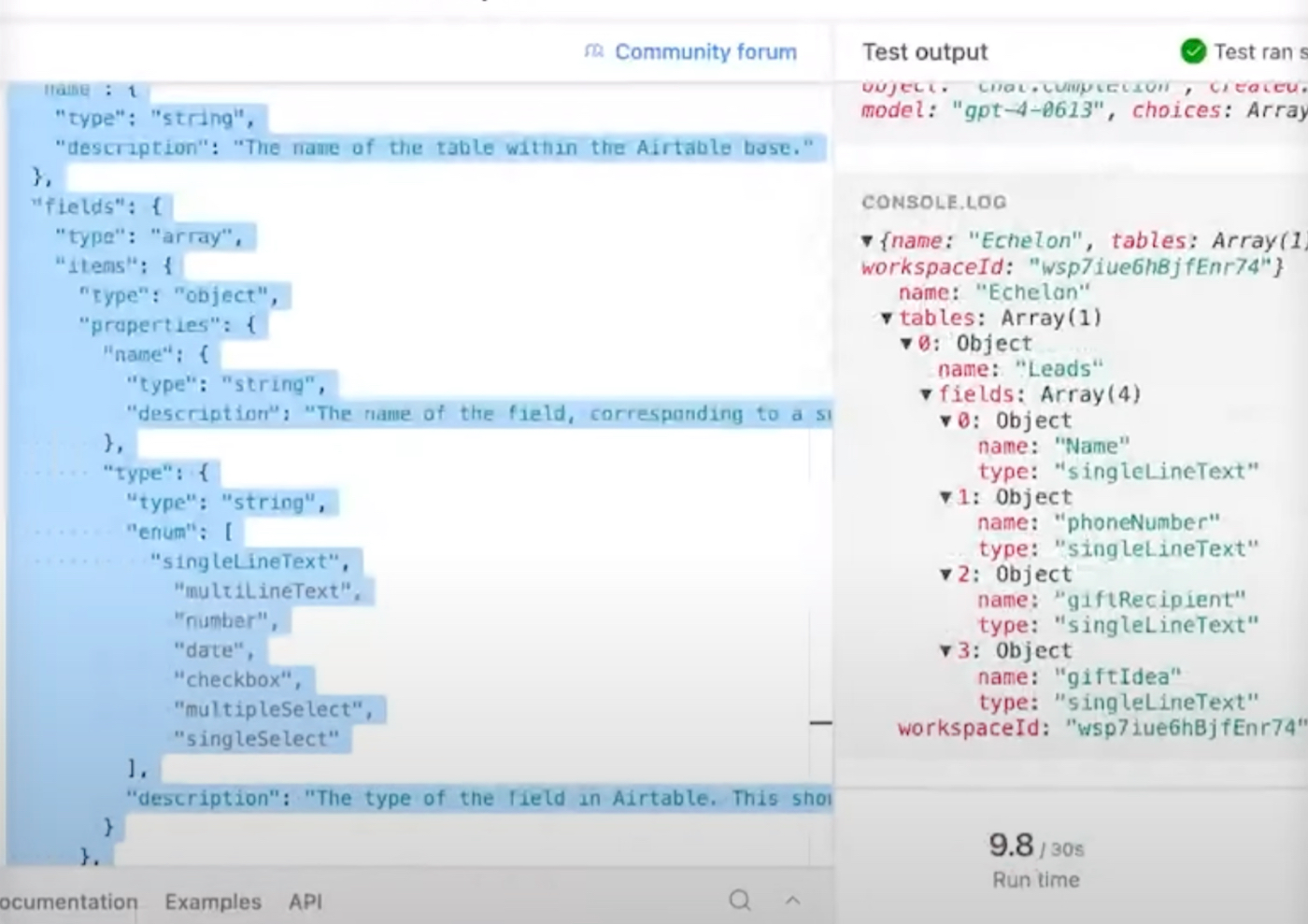
Thank you to everyone who is watching or listening to my podcast, AI & I. If you want to see a collection of all of the prompts and responses in one place, Every contributor Rhea Purohit is breaking them down for you to replicate. Let us know what else you’d like to see in these guides. —Dan Shipper
Was this newsletter forwarded to you? Sign up to get it in your inbox.
I took the better part of an hour to write the sentence that you are reading.
I stared at a blinking cursor, drank a cup of coffee, obsessively played the same song on repeat—but the inspiration would not come.
Going from zero to one is hard.
I imagine founders face a similar problem when turning their ideas into businesses.
Nicholas Thorne is building a solution to this problem: Audos, an AI chatbot that can take you from startup idea to pitch deck, functional website, custom GPT, and interviews with users in just a few minutes.
Thorne is a general partner at incubator Prehype, which has launched successful venture-backed startups like Barkbox and Ro Health. At Prehype, Thorne works closely with entrepreneurs who are starting new companies—and now he’s using AI to scale the process.
In this episode of AI & I, Dan Shipper interviewed Thorne about how he built, and now runs, Audos using ChatGPT. Thorne gives an inside look at how Audos uses AI for:
- Marketing
- Product management
- Sales
- Operations
He also uses ChatGPT to prototype new features for Audos live on the show.
I think this conversation will be useful for anyone who has ever toyed with the idea of starting a business, and is interested in how to do it with AI. This piece goes into the details of how Thorne used ChatGPT to build and operate Audos, complete with screenshots.
Thorne believes that it’s important for a founder to deeply imagine the customer they aim to serve. Audos’s chatbot prompts the user to do this by asking them to name their potential customer.
All screenshots courtesy of AI & I.In the pursuit of finding “founder-customer fit,” the Audos bot directs the user to articulate the problem that the customer is struggling with. It also presents the user with different interpretations of the problem statement with the intent of defining the issue as precisely as possible.
After the user has selected the interpretation that best describes their problem, the Audos bot generates a list of potential solutions. Thorne adds that the solutions are seldom mutually exclusive and simply address the issue across a range of business models.Once the user indicates the solutions he thinks would best serve the customer, the Audos bot conveys that it will repurpose the information into a pitch deck of sorts for the business. It also informs the customer what the next steps to set up their business will be. Meanwhile, on the backend, different GPTs work together to prepare the presentation.As we wait for the Audos bot to generate the presentation, let’s recap: Audos reaches a customer through an Instagram advertisement, gets them to answer a few simple questions about their needs—and poof! Just like that, it creates a pitch deck for them.Thorne gives Dan an inside look at how Audos uses AI to execute the following functions:Marketing
Audos employs a custom GPT to develop branding and positioning strategies for the users’ products. This model is tasked with generating ideas for key elements such as the product name, color scheme, and logo. As part of this process, the GPT is designed to identify the target audience's role models or heroes. The model can then predict what name these heroes would give the product, helping Audos create a brand that resonates with the users’ intended customers.
Product management
Audos has another GPT to anticipate and visualize the paths a customer might take while interacting with the product.
Sales
Audos has developed automated systems that search the internet in order to gather data about the potential market size of the business.
Operations
Last but not the least, Audos creates an actionable to-do list for the user.
Thorne remarks that the web of AI systems and models are able to complete these processes in around five to six minutes, so long as GPT-4 is not too backed up.The Audos bot provides two options for users who wish to give feedback on the presentation. The first option is to redirect the user to a custom interface where they can edit an AI-generated elevator pitch version of the deck, which serves as the foundation for the entire presentation. The second option allows users to download the presentation and make the desired edits themselves.
Once the user is satisfied with the presentation, Audos requests them to make a payment of $30 before they move on to the next step, at which point it develops assets that will help the user launch a marketing campaign and gather customer feedback.The first tool that Audos creates for the user is a website for their product drawing from the information in the presentation. The Audos bot also finds and registers a domain name for the website.
The other asset that Audos creates for the user is a custom GPT that will help the user acquire customers in a manner similar to the way Audos acquired them.As Thorne walks Dan through the resources, he clarifies that Audos strategically prioritizes developing outward-facing materials early on because providing users with concrete, usable tools can be a potent source of motivation to follow through on their business idea.In the next step, Audos presents the user with a set of interview questions designed on the basis of the "needfinding" playbook, a customer-research method designed by a Stanford design school professor. The Audos bot directs the user to share the questions with their friends and family, and also complete it themself from the perspective of a potential customer.
Here’s a preview of the first question of the customer interview.As the user receives responses to these questions, Audos synthesizes the data into a product roadmap that organizes the key features that the product should have in a dashboard.Dan is amazed by the end-to-end integration of AI into Audos and is curious about how the models actually work. Thorne uses this opportunity to answer a central question of this show: how he uses ChatGPT. Thorne says that he used ChatGPT to develop Audos, explaining that ChatGPT has been “completely revolutionizing” for him because it helps him code even though he has never taken a formal computer science class. Thorne adds that he built many of the core features of Audos using ChatGPT.
Prototyping a new feature for Audos with ChatGPT
To demonstrate what he means, Thorne prototypes a new feature for Audos live on the show. He explains that the Audos team typically uses Airtable, a low-code platform for building apps, when they are in the process of testing and developing new features. He uses ChatGPT to write code that will build different types of automatic functions on top of Airtable, including functions that work with third-party apps like Stripe.
The feature that Thorne wants to prototype at the moment has to do with a database that organizes the information that a user’s custom GPT gathers after interviewing their customers. He wanted to modify the way this data is stored by adding a new column to save the raw content of the custom GPT’s chat history with the customer.
This is a script in Airtable that automates the process of creating a table that organizes and stores the data gathered by the custom GPT through customer interviews.
Thorne copy and pastes the script from Airtable into ChatGPT and prompts it as follows:Thorne: I have the following script running in Airtable. I would like to update the JSON Schema to provide for the creation of a second table in each Base that it designs. The second Table should be called “Chats” and it should have two columns (of the type singleLineText): Chatld and Chat.
ChatGPT instructs Thorne on how to implement the changes in the script. It also excerpts the part of the script that needs to be modified and revises it accordingly. Here’s part of ChatGPT’s response.
Thorne prompts ChatGPT to reproduce the whole script, as opposed to the excerpt of the modified version, so that all he has to do is copy and paste the code block back into Airtable.Thorne: Please reproduce the entire tables.items array so I don’t make a mistake in indentation.
Here’s part of what ChatGPT generated:
Thorne copy and pastes the code block that ChatGPT generated into Airtable. Thorne explains that he would run the modified code and use ChatGPT to resolve any errors it might produce. He is confident that after a couple of rounds of back and forth, the code would be running smoothly.I’ve been using a selection of AI tools to help me solve the blank-page problem—and now it seems like AI is taking would-be founders from zero to one as well.
Rhea Purohit is a contributing writer for Every focused on research-driven storytelling in tech. You can follow her on X at @RheaPurohit1 and on LinkedIn, and Every on X at @every and on LinkedIn.
Ideas and Apps to
Thrive in the AI Age
The essential toolkit for those shaping the future
"This might be the best value you
can get from an AI subscription."
- Jay S.
Join 100,000+ leaders, builders, and innovators

Email address
Already have an account? Sign in
What is included in a subscription?
Daily insights from AI pioneers + early access to powerful AI tools

